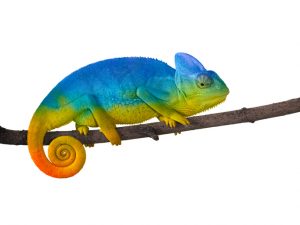Gold Is a Chameleon
The comments below are an edited and abridged synopsis of an article by Jim Rickards
Gold is a chameleon; it changes in response to the environment. Rickards discusses gold in all its roles—commodity, safe-haven investment, and the most stable long-term form of money the world has ever known—and concludes:

“For the first time since 2008, it looks like central banks are losing control of the global financial system. Gold does not have a central bank. Gold always inspires confidence because it is scarce, tested by time and has no credit risk.
Lost confidence in fiat money starts slowly then builds rapidly to a crescendo. The end result is panic buying of gold and a price super-spike.
We saw this behavior in the late 1970s. Gold moved from $35 per ounce in August 1971 to $800 per ounce in January 1980; that’s a 2,200% gain in less than nine years.
We’re in the early stages of a similar super-spike that could take gold to $10,000 per ounce or higher. When that happens there will be one important difference between the new super-spike and what happened in 1980.
Back then, you could buy gold at $100, $200, or $500 per ounce and enjoy the ride. In the new super-spike, you may not be able to get any gold at all. You’ll be watching the price go up on TV, but unable to buy any for yourself.
Gold will be in such short supply that only the central banks, giant hedge funds and billionaires will be able to get their hands on any. The mint and your local dealer will be sold out. That physical scarcity will make the price super-spike even more extreme than in 1980.
The time to buy gold is now, before the price spikes and before supplies dry up. The current price decline gives you an ideal opportunity to buy gold at a bargain basement price. It won’t last long.”
